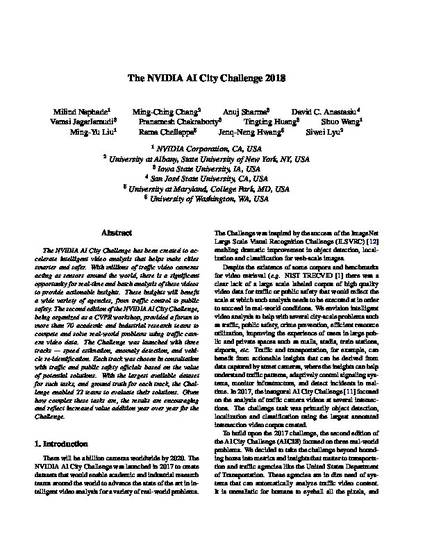
The NVIDIA AI City Challenge has been created to accelerate intelligent video analysis that helps make cities smarter and safer. With millions of traffic video cameras acting as sensors around the world, there is a significant opportunity for real-time and batch analysis of these videos to provide actionable insights. These insights will benefit a wide variety of agencies, from traffic control to public safety. The second edition of the NVIDIA AI City Challenge, being organized as a CVPR workshop, provided a forum to more than 70 academic and industrial research teams to compete and solve real-world problems using traffic camera video data. The Challenge was launched with three tracks - speed estimation, anomaly detection, and vehicle re-identification. Each track was chosen in consultation with traffic and public safety officials based on the value of potential solutions. With the largest available dataset for such tasks, and ground truth for each track, the Challenge enabled 22 teams to evaluate their solutions. Given how complex these tasks are, the results are encouraging and reflect increased value addition year over year for the Challenge.
Available at: http://works.bepress.com/anuj_sharma1/79/

This is a manuscript of a proceeding published as Naphade, Milind, Ming-Ching Chang, Anuj Sharma, David C. Anastasiu, Vamsi Jagarlamudi, Pranamesh Chakraborty, Tingting Huang et al. "The 2018 NVIDIA AI City Challenge." In 2018 IEEE/CVF Conference on Computer Vision and Pattern Recognition Workshops (CVPRW), (2018): 53-60. DOI: 10.1109/CVPRW.2018.00015. Posted with permission.